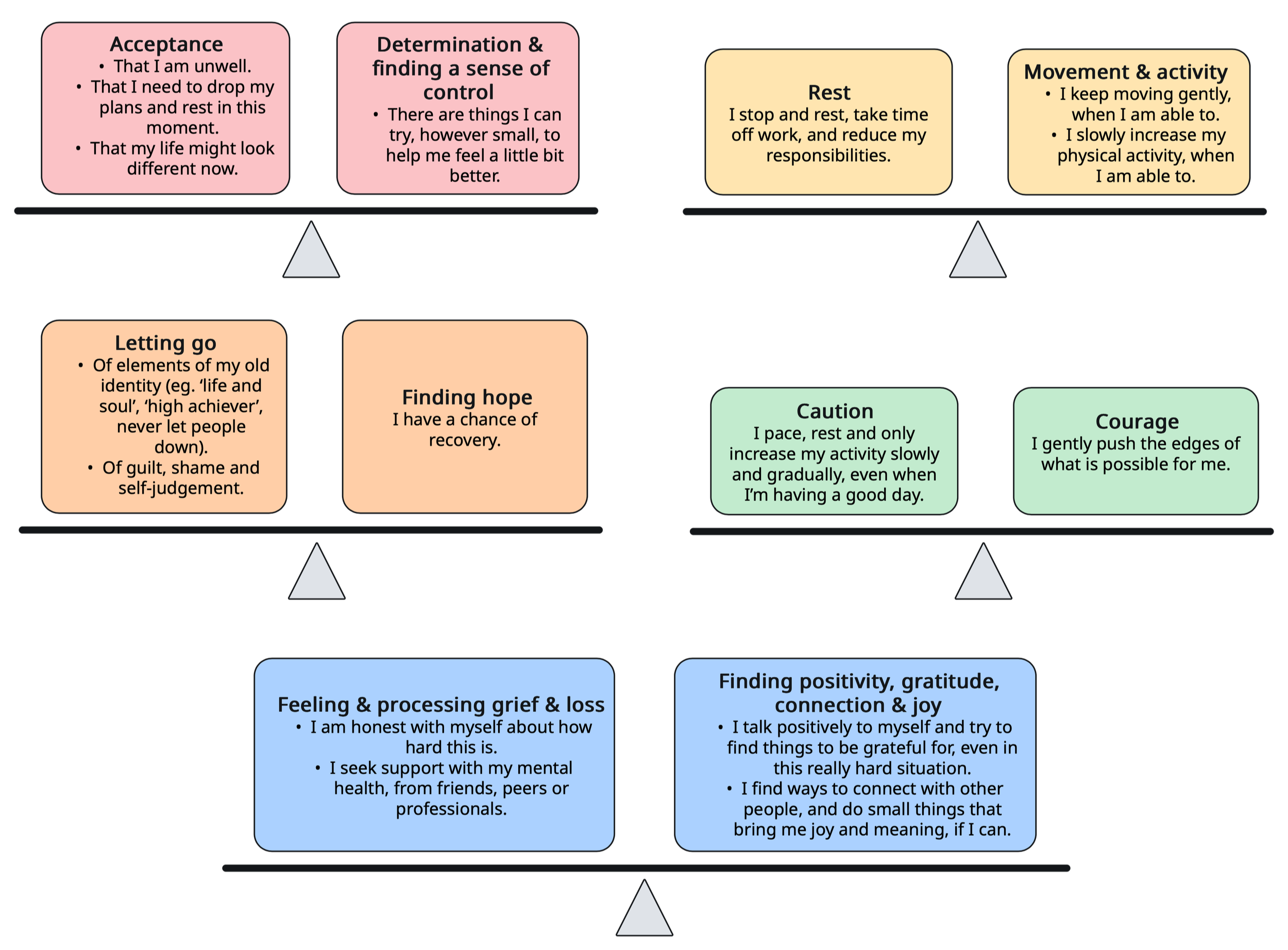The fine balance of Long Covid recovery
One of the most striking things I began to notice in my interviews with people who had moved towards recovery from Long Covid was the tension between two seemingly opposite qualities: determination to recover, and acceptance of ill health.
On the one hand, people were talking about the importance of not giving up. One characteristic that shone through many of my interviews was the utter determination and resolve that people had – that they were going to get better, no matter what it took.
But at the same time, people also described the importance of acceptance – of letting go of all the things you wanted to be able to do but couldn’t, of not fighting the condition. And those people with all fight, and not much acceptance, seemed to have a much rockier journey – big ups with incredible achievements, followed by deep devastating crashes.
How could you accept, but also stay determined? Not fight the need to rest, but keep up the fight for health? This wasn’t an abstract question for me – it went to the heart of how I understood and managed my own condition. When to fight? When to accept, let go, rest? How to balance the two?
Balancing opposites
As I read through the interview transcripts I started to notice other tensions that people were managing:
Acceptance vs. Determination and finding a sense of control
Rest vs. Movement and activity
Letting go vs. Finding hope
Caution vs. Courage
Feeling and processing grief and loss vs. Finding positivity, gratitude, connection and joy
I started to understand just how complex it is to navigate our way through Long Covid, given the limited recovery tools currently available to us. Recovery often seemed to require finding a balance between each of these opposites.
No ‘right’ balance
But there’s another level of complexity too – because there is no ‘right’ balance. Our condition, capacity and the ‘baseline’ level of activity we’re able to do without activating further symptoms is always shifting. And the reasons for this can be impossible to identify. Post-exertional malaise (PEM) means that we might not know that we’ve overdone it until days later. We’re like ships in a storm, with a compass that is spinning in all directions.
So there is no answer to the question of the right balance – it’s a process of constantly testing and negotiating, pushing forward and stepping back, getting things wrong and re-charting our course.
We need skilled support
This is where skilled professionals to support us can be invaluable. If we’re falling too far in one direction – for example, pushing through and not resting enough – or giving up and not moving enough* – they can help us. This is incredibly complex and skilled work and needs professionals with a deep sensitivity and responsiveness who can meet us where wherever we are currently at. They can help hold the compass steady for us.
Checking our balance
I have tried to capture these tensions in the diagram above. This is not the way to recovery – but I hope it’s a tool we can use to help us navigate the way. It’s not a magic cure, a recipe we can follow to be well again, if we only get it right. The things that are happening to us on a physiological level are real and might or might not respond to the small changes we make by trying to reach some balance in these areas. But this is something we can hopefully use to understand where we are – and to remind us to check our balance.
*This means moving only within our capacity – if we have no capacity for movement we need to completely rest.

